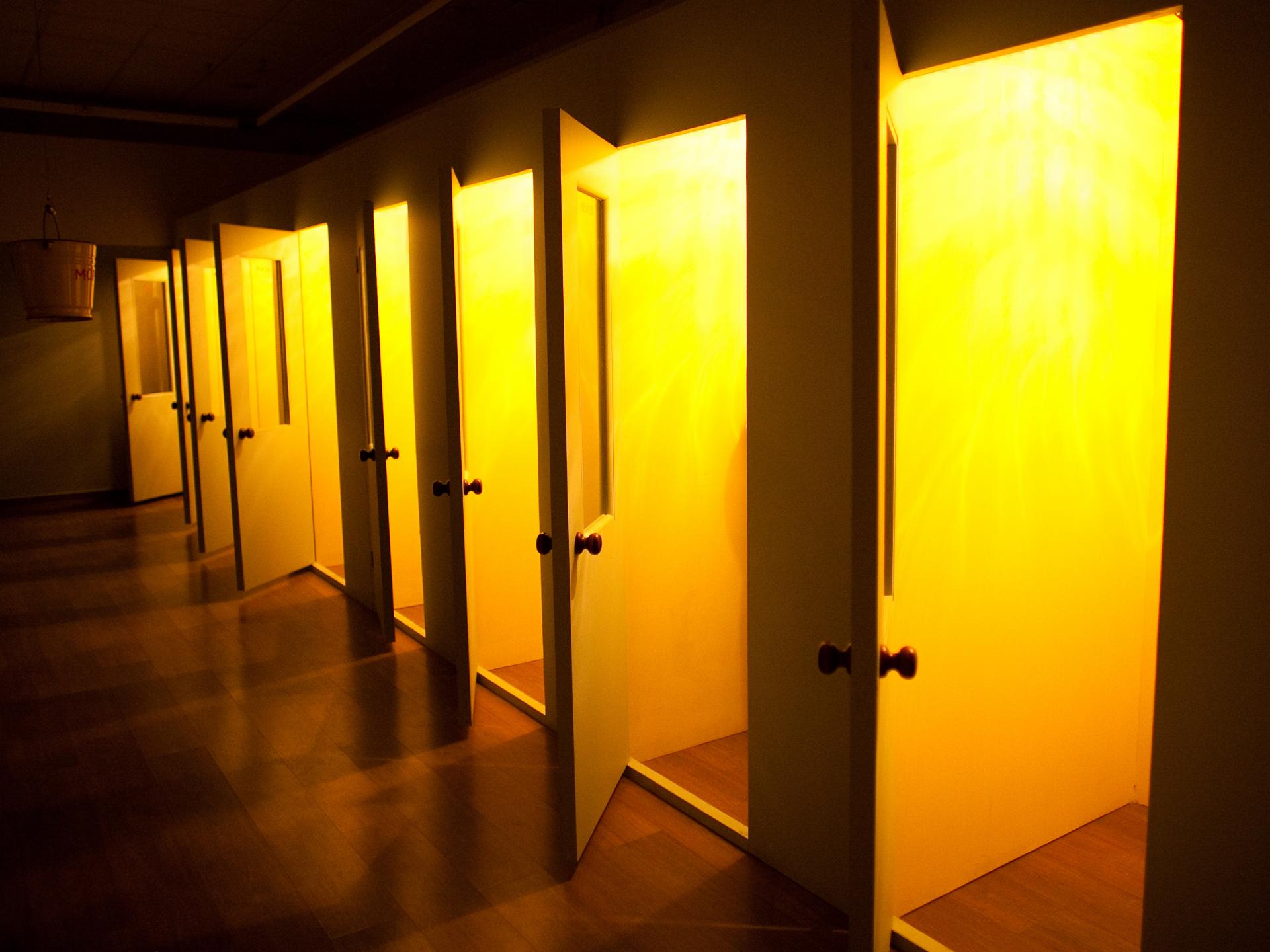
Stella Art Foundation presents the second part of a “triptych” of exhibitions by the Cupidon artistic coop. The first part — Show and tell. The artist and his model. Still waters run deep — was held in Autumn 2009 and its culminating section consisted of works by Andrei Filippov and Victor Skersis. On this occasion the group project Metamorpheus centres on the work of Yuri Albert, who has recently paid much attention to his own dreams about art, and has produced a book with a detailed record of his dreams over several years. Metamorpheus is a small sample of his dreams, illustrated by the group in a documentary-oneiroid spirit.
This installation by the Cupidon group consists of three exhibits of differing scale. The first — the spatial nucleus of the installation — is a row of thirteen cubicles, imitating a Soviet-era public office for long-distance phone calls. Each of the cubicles is devoted to a dream and the abbreviation of the dream is marked on its door. Upon entering the cubicle, the viewer sees a drawing-illustration by Victor Skersis to Albert’s dream, and he can then pick up a telephone receiver and hear Albert’s voice recounting the dream.
Meanwhile the second exhibition object, or rather subject-personality — the artist Yuri Albert — will sleep peacefully next to the cubicles in an old bed from his country house. It should be noted that he only sleeps at the private view. The rest of the time this exhibit consists of the bed alone, which somewhat changes the intonation of the project.
Finally, the third object is an old stainless-steel bucket of water, on which the name of the exhibition is roughly inscribed. It hangs from the ceiling of the next room at the level of the viewer’s knees, obstructing the passage to offices. The water in the bucket might be intended for waking up from the dream, and thereby mark the spatial border of the installation. If so, the inscription — “Metamorpheus” — is a sign of such awakening. Or of a false awakening, which turns out to be the next dream.
According to the dictionary, “’meta’ is used in compound words to denote intervening temporality, following after something, transition to something else”. In the given instance the transition is to a new dream (in which the preceding dream is inserted), into the embraces of a new Morpheus, which will certainly not be the last — a meta-Morpheus. And since this is a project by three conceptualists, a basic conceptual correlation is appropriate with the term, which is of central importance to the conceptualist movement, of “meta-position” — a position outside the observed object.
In Metamorpheus we observe the return from “inside” to “between” or, put differently, from the rational ideal of western conceptualism to the irrational poetic of dreams, which is characteristic of surrealism. Moscow conceptualism has always been described as romantic and is origins lie in Russian surrealism. Just as children grow more like their parents with age, so an artistic movement refers back to its roots ever more insistently as time goes on. And thereby emphasizes the originality of its own persona.